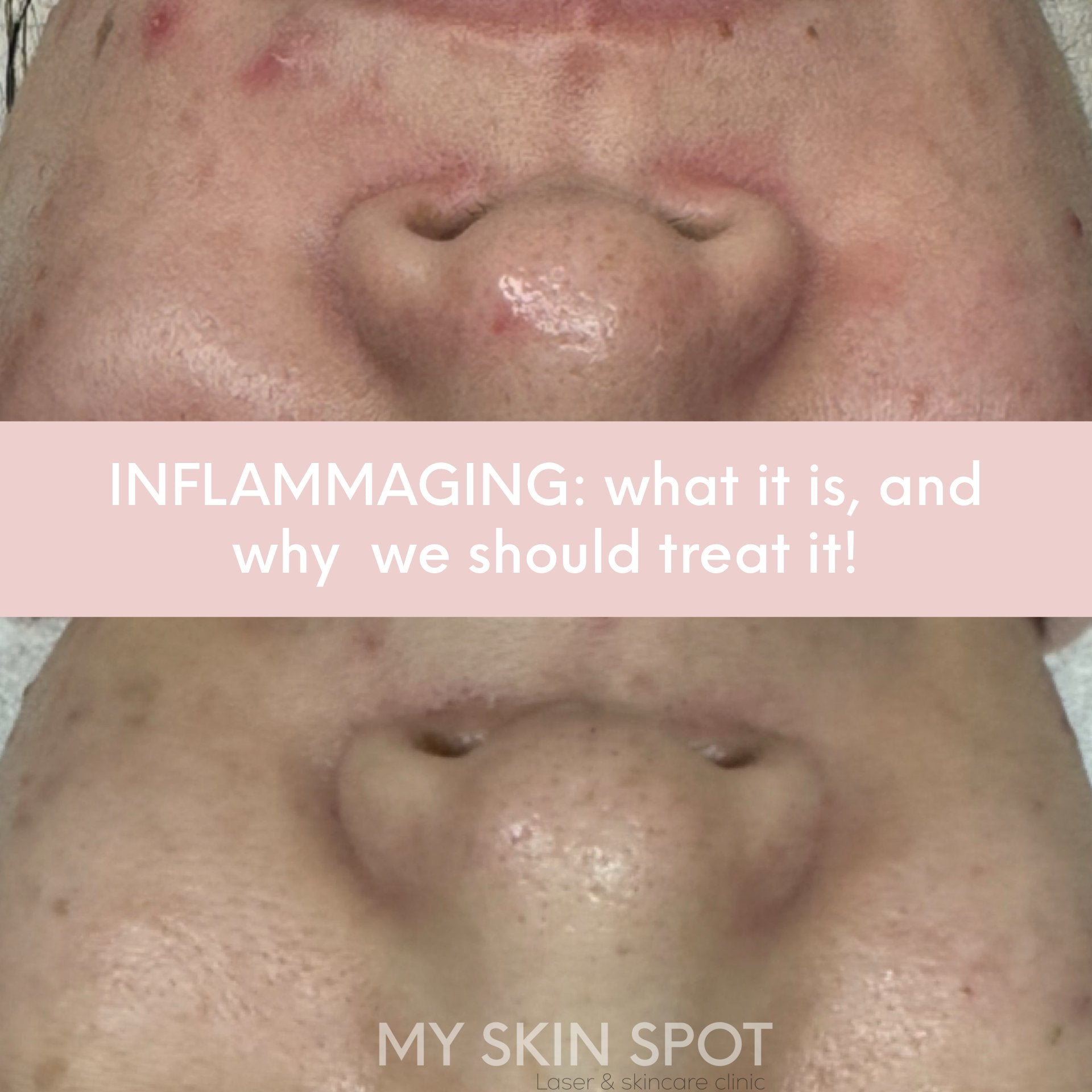4 Grades of Acne and How We Treat It

What is acne?
Acne is a common skin condition that occurs when the hair follicles become clogged with oil and dead skin cells. It is considered a localized skin infection, and it varies from mild to severe. Acne affects the face, neck, chest, back, and shoulders and can often cause physical and emotional distress. So we're here to help you out.
How does acne occur?
Acne occurs when pores become blocked by excess oils and the accumulation of dead skin cells. The excess oils are produced by the sebaceous glands, which are usually located near hair follicles. This combination of excess oils and dead skin cells can block the pores and trap bacteria, which can then lead to inflammation and a skin break out.
Acne Grading Scale
Acne can be divided into 4 grades, ranging in severity.
Grade 1 Acne: Grade 1 acne is usually mild and is characterized by occasional papules, blackheads, or whiteheads. It is usually treated with topical serums containing ingredients such as salicylic acid, glycolic acid, benzoyl peroxide, and retinol. Our holy grail product for grade 1 acne is “iS clinical’s ACTIVE SERUM”. This product is MAGIC in a bottle. It contains salicylic acid, glycolic acid, lactic acid and brightening ingredients. It doesn’t only target and reduce acne, this product PREVENTS acne, reduces fine lines, improves overall texture, brightens and reduces PIH (post inflammatory pigmentation or “pigmented scars). Along with this product we recommend monthly facials to maintain healthy skin.
Grade 2 Acne: Characterized by moderate acne affecting multiple areas of the face. Includes papules, blocked pores, pimples, and some potential scaring. This grade of acne consists of slightly more inflammation than grade one acne. Our holy grail product for grade 2 acne is “iS clinical’s Pro-health serum”. This daytime protective serum contains 15% L-ascorbic acid (highest grade form of vitamin C), vitamin E, and a small dose of vitamin A (retinol). It also contains olive leaf extract which is known for its potent antioxidant benefits. This serum reduces inflammation, redness, and irritation that comes from acne. It also protects skin from environmental stressors and damage while supporting a healthy skin barrier.
Grade 3 Acne: Characterized by severe acne affecting the entire face, backs, chest, etc. Includes cysts, nodules, and has potential for severe scarring with tissue damage. Grade 3 acne is typically quite severe and may require more than topical products. Typically antibiotics may be prescribed by your doctor, or oral “Accutane” to stop the oil production in the skin. Accutane is usually a last resort, as it makes skin extremely sensitive and photosensitive and you typically have to avoid all facials and active skincare products for the duration of the medication including 6 months after. Before resorting to Accutane we encourage clients to try deep cleansing acne facials combined with “FRACTORA RF MICRONEEDLING” , and topical retinol.
Grade 4 Acne: Characterized by extreme cases of acne affecting the entire body. Includes painful and deep pustules and nodules that can cause tissue damage and scarring. Grade 4 acne almost always requires immediate intervention and is usually treated orally with a high dose of Accutane prescribed by a doctor. For in-office treatment, this grade of acne can only be treated by dermatologists, and typically leaves deep scarring even after it has been resolved. After you treat the acne a "medical aesthetician” can help to treat the scarring. We use microneedling, and radio-frequency microneedling to do this but it will require a lot of sessions especially if the acne scars are very deep. Grade 4 acne is not common, as it typically takes time to reach this level of severity.



Comments